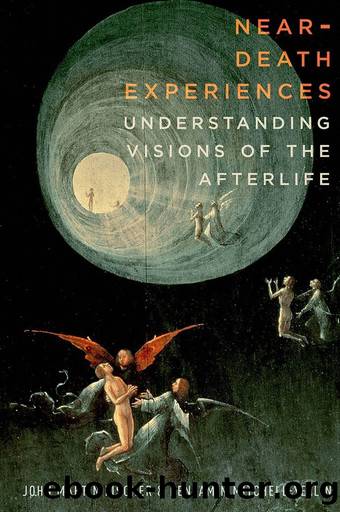Near-Death Experiences by Fischer John Martin; Mitchell-Yellin Benjamin;

Author:Fischer, John Martin; Mitchell-Yellin, Benjamin;
Language: eng
Format: epub
Publisher: Oxford University Press, Incorporated
Published: 2016-02-15T00:00:00+00:00
* * *
1Kelly et al. (1999â2000: 515). See also Cook et al. (1998).
2Van Fraassen (1980: 90).
3For more in this vein, see Ball (2014).
4Compare van Lommel (2010, 2013).
5For a nice overview of the main issues, see Robinson (2012).
6We would like to thank David Chalmers for raising this objection in personal correspondence.
Chapter 10
Near-Death Experiences, Transformation, and the Afterlife
We have been focusing on issues of explanation. Why do people have near-death experiences? What is the role of our brains in these experiences? But questions about their causes do not exhaust the topicâs interest. Many have noted the profound and transformational nature of near-death experiencesâespecially, the people who have had them and shared their stories! We want to understand this too. How are we to make sense of near-death experiences in light of their significance for those who have them?
The data on the transformative effects of near-death experiences are not just anecdotal. In a well-known longitudinal study, van Lommel led a team that interviewed several hundred patients at Dutch hospitals who had been successfully resuscitated. They talked to people who had survived cardiac arrest. They found that 18% of these people had had near-death experiences, or experiences that were similar in various ways, and they were able to gather information about the effects of these experiences on many of their lives. They interviewed 74 of these patients two years, and 23 of them again eight years after their initial resuscitations. They found that, in relation to a control group of subjects, patients who had had near-death experiences were significantly transformed. After two years, âpeople who had [an] NDE had a significant increase in belief in an afterlife and decrease in fear of death compared with people who had not had this experience.â1 And after eight years,
they had become more emotionally vulnerable and empathic, and often there was evidence of increased intuitive feelings. Most of this group [of NDErs] did not show any fear of death and strongly believed in an afterlife. Positive changes were more apparent at 8 years than at 2 years of follow-up.2
Having a near-death experience was correlated with higher spirituality and pro-sociality. Those with near-death experiences were not only more likely to believe in an afterlife, but they were also more likely to exhibit acceptance and love of others. It is hard to argue with the characterization of (at least some of) these effects as âpositive changes.â Subjects of near-death experiences were transformed for the better. And this was not just due to their having survived cardiac arrest. Their transformation was measured in contrast to other survivors, who had apparently not had near-death experiences.
There are various ways of interpreting the significance of these data. Putting these findings about the transformative power of near-death experiences together with the lack of satisfactory physical explanations of the phenomena, van Lommel and his colleagues call for serious consideration of alternatives to the view that consciousness is localized in the brain. But others have taken the transformative power of near-death experiences to suggest something more. For
Download
This site does not store any files on its server. We only index and link to content provided by other sites. Please contact the content providers to delete copyright contents if any and email us, we'll remove relevant links or contents immediately.
| Ancient & Controversial Knowledge | Ghosts & Hauntings |
| Hermetism & Rosicrucianism | Magic Studies |
| Occultism | Parapsychology |
| Supernatural | UFOs |
| Unexplained Mysteries |
Animal Frequency by Melissa Alvarez(3750)
Sigil Witchery by Laura Tempest Zakroff(3648)
Real Magic by Dean Radin PhD(3562)
Fingerprints of the Gods by Graham Hancock(3206)
The Rosicrucians by Christopher McIntosh(3046)
Aleister Crowley: The Biography by Tobias Churton(3015)
Journeys Out of the Body by Robert Monroe(2980)
Alchemy and Alchemists by C. J. S. Thompson(2908)
Mysteries by Colin Wilson(2883)
Hitler's Monsters by Eric Kurlander(2727)
John Dee and the Empire of Angels by Jason Louv(2705)
Wicca: a guide for the solitary practitioner by Scott Cunningham(2702)
Infinite Energy Technologies by Finley Eversole(2486)
The Hatha Yoga Pradipika (Translated) by Svatmarama(2476)
Dark Star Rising by Gary Lachman(2416)
The Book of Lies by Aleister Crowley(2381)
Aliens by Jim Al-Khalili(2376)
To Light a Sacred Flame by Silver RavenWolf(2350)
Hitler's Flying Saucers: A Guide to German Flying Discs of the Second World War by Stevens Henry(2290)
